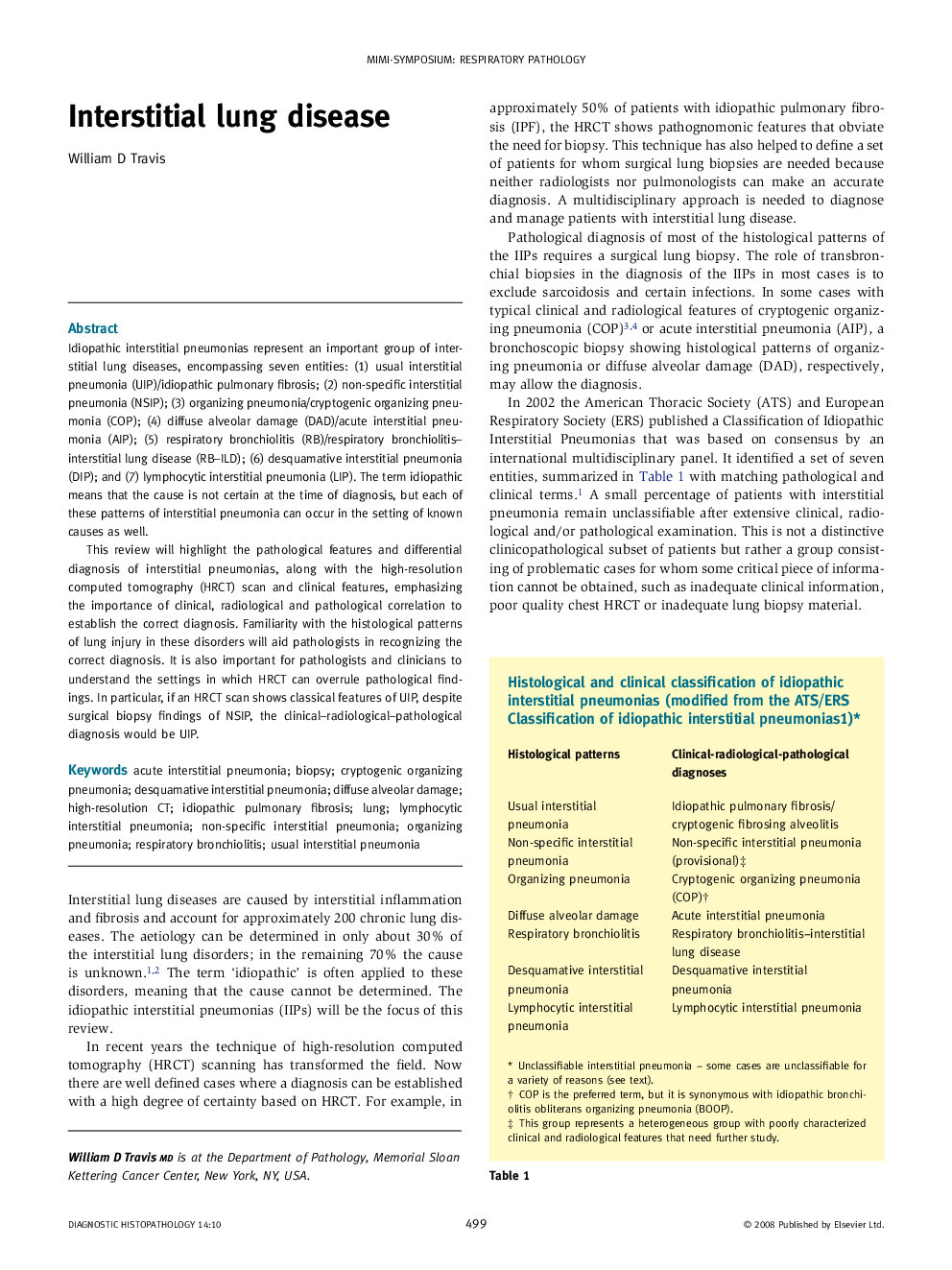| Article ID | Journal | Published Year | Pages | File Type |
|---|---|---|---|---|
| 4131537 | Diagnostic Histopathology | 2008 | 10 Pages |
Idiopathic interstitial pneumonias represent an important group of interstitial lung diseases, encompassing seven entities: (1) usual interstitial pneumonia (UIP)/idiopathic pulmonary fibrosis; (2) non-specific interstitial pneumonia (NSIP); (3) organizing pneumonia/cryptogenic organizing pneumonia (COP); (4) diffuse alveolar damage (DAD)/acute interstitial pneumonia (AIP); (5) respiratory bronchiolitis (RB)/respiratory bronchiolitis–interstitial lung disease (RB–ILD); (6) desquamative interstitial pneumonia (DIP); and (7) lymphocytic interstitial pneumonia (LIP). The term idiopathic means that the cause is not certain at the time of diagnosis, but each of these patterns of interstitial pneumonia can occur in the setting of known causes as well.This review will highlight the pathological features and differential diagnosis of interstitial pneumonias, along with the high-resolution computed tomography (HRCT) scan and clinical features, emphasizing the importance of clinical, radiological and pathological correlation to establish the correct diagnosis. Familiarity with the histological patterns of lung injury in these disorders will aid pathologists in recognizing the correct diagnosis. It is also important for pathologists and clinicians to understand the settings in which HRCT can overrule pathological findings. In particular, if an HRCT scan shows classical features of UIP, despite surgical biopsy findings of NSIP, the clinical–radiological–pathological diagnosis would be UIP.
